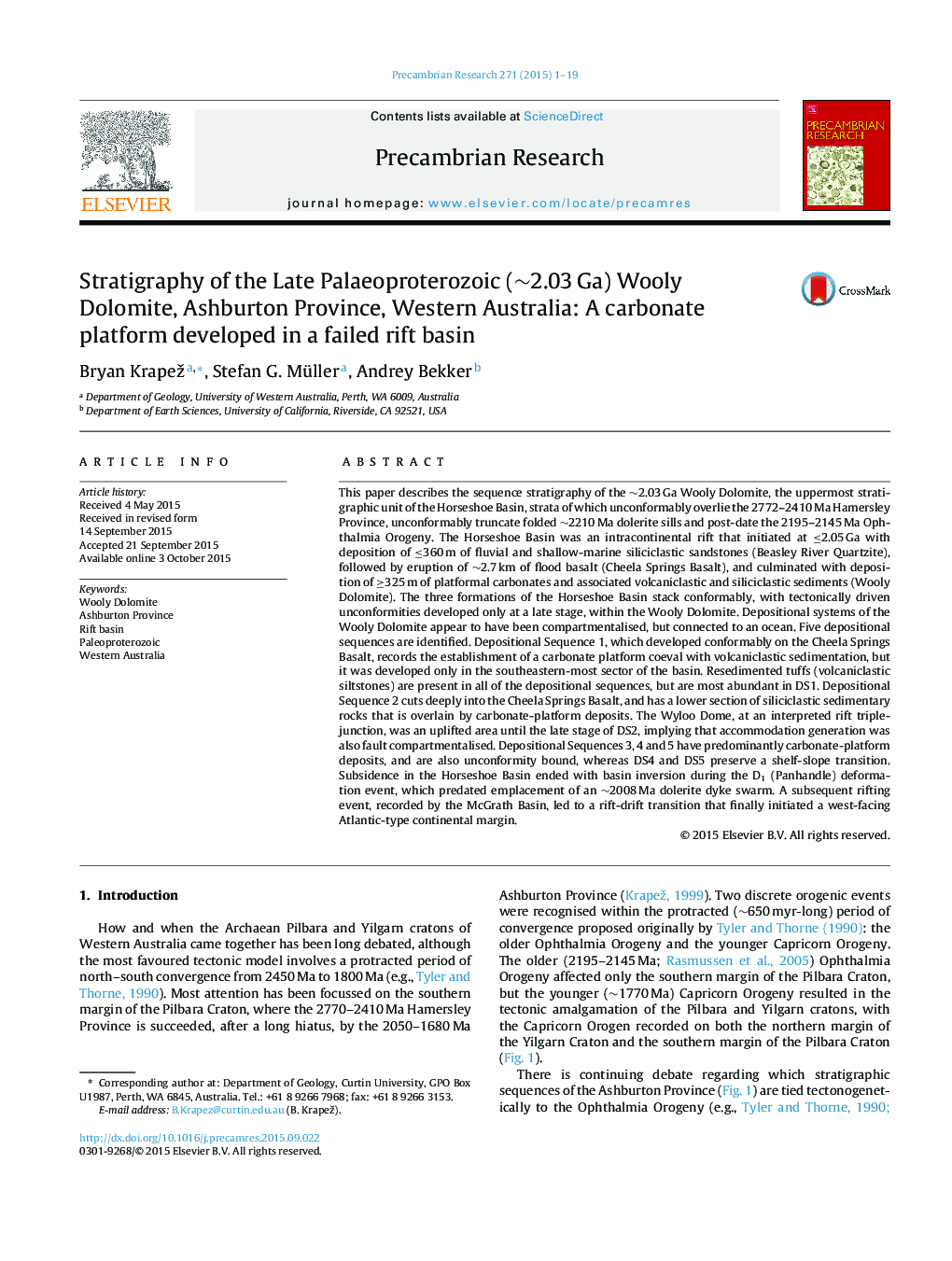| Article ID | Journal | Published Year | Pages | File Type |
|---|---|---|---|---|
| 4722474 | Precambrian Research | 2015 | 19 Pages |
•The Wooly Dolomite was deposited in the Horseshoe rift basin.•The basin post-dates ∼2210 Ma dolerites and the 2195–2145 Ma Ophthalmia Orogen.•The formation comprises five unconformity-bound depositional sequences.•The lowermost sequence, dated at 2.03 Ga, conformably overlies flood basalt.•Platform carbonates dominate, with minor siliciclastic and volcaniclastic deposits.
This paper describes the sequence stratigraphy of the ∼2.03 Ga Wooly Dolomite, the uppermost stratigraphic unit of the Horseshoe Basin, strata of which unconformably overlie the 2772–2410 Ma Hamersley Province, unconformably truncate folded ∼2210 Ma dolerite sills and post-date the 2195–2145 Ma Ophthalmia Orogeny. The Horseshoe Basin was an intracontinental rift that initiated at ≤2.05 Ga with deposition of ≤360 m of fluvial and shallow-marine siliciclastic sandstones (Beasley River Quartzite), followed by eruption of ∼2.7 km of flood basalt (Cheela Springs Basalt), and culminated with deposition of ≥325 m of platformal carbonates and associated volcaniclastic and siliciclastic sediments (Wooly Dolomite). The three formations of the Horseshoe Basin stack conformably, with tectonically driven unconformities developed only at a late stage, within the Wooly Dolomite. Depositional systems of the Wooly Dolomite appear to have been compartmentalised, but connected to an ocean. Five depositional sequences are identified. Depositional Sequence 1, which developed conformably on the Cheela Springs Basalt, records the establishment of a carbonate platform coeval with volcaniclastic sedimentation, but it was developed only in the southeastern-most sector of the basin. Resedimented tuffs (volcaniclastic siltstones) are present in all of the depositional sequences, but are most abundant in DS1. Depositional Sequence 2 cuts deeply into the Cheela Springs Basalt, and has a lower section of siliciclastic sedimentary rocks that is overlain by carbonate-platform deposits. The Wyloo Dome, at an interpreted rift triple-junction, was an uplifted area until the late stage of DS2, implying that accommodation generation was also fault compartmentalised. Depositional Sequences 3, 4 and 5 have predominantly carbonate-platform deposits, and are also unconformity bound, whereas DS4 and DS5 preserve a shelf-slope transition. Subsidence in the Horseshoe Basin ended with basin inversion during the D1 (Panhandle) deformation event, which predated emplacement of an ∼2008 Ma dolerite dyke swarm. A subsequent rifting event, recorded by the McGrath Basin, led to a rift-drift transition that finally initiated a west-facing Atlantic-type continental margin.
